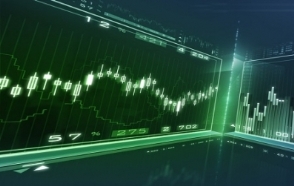Lewis Borsellino strategy, effective use of technical analysis.
Famous stock market traders such as Lewis Borsellino have left a huge legacy for the next generation of traders in the form of their books.

The books describe in detail the technical techniques that the trader used to achieve his goals.
Lewis Borsellino argues that there are no identical trading days, since they are all different, and as a result, the tools needed for its analysis are completely different.
In this article we will look at the techniques and strategy that Lewis Borsellino used in practice.
Trading Algorithm
It may seem surprising to many, but Lewis Borsellino is an outspoken proponent of technical analysis; moreover, he was one of the first intraday traders to trade in the so-called “Pit” of the stock exchange.
1. Definition of trend
The key rule for any trader practicing technical analysis is to open positions only in the direction of the trend.
To determine this, Lewis Borsellino used several trading tools.
The first and simplest tool is trend lines. It is worth noting that Borsellino drew such lines almost arbitrarily, sometimes even crossing the price itself. However, this allowed him to visualize the price movement and accurately see the current trend.
The second favorite tool for determining the trend was simple moving averages with periods of 200, 50 and 20.
First, he looked closely at the position of the moving averages relative to each other, thus assessing the current trend, global and medium-term.
Secondly, he paid attention to the angle of inclination and the degree of distance of the price from the moving average.
So if the price has moved a significant distance away from the moving average, the trend will most likely continue, since the players simply do not have enough strength to make such a strong effort to reverse.
2. Trading with moving averages
Lewis Borsellino wrote in his book that there are no wrong or bad moving averages, namely, there are no universal periods that can be used on any assets.
The market is volatile, so for each futures and time frame he selected a period of moving averages based on history. However, in contrast to the tasks set, he used three moving averages with periods of 200, 50 and 20.

So if he needed a long-term signal based on the "Buy and Hold" principle, he used a 200-period moving average, if he was interested in medium-term trades, he used a 50-period moving average, and if he was interested in scalping, he used a 10-period moving average.
Regarding signals. When trading moving averages, he paid attention to rebounds from these lines, as well as their breakout by the price. However, the strongest signal that Lewis considered was based on the deviation of the price from the moving average.
If there is a deviation of the price by 6 percent or more relative to the average price, the probability of a rollback increases, which he successfully used.
3. Trading on reversal patterns
Despite the fact that Lewis Borsellino mainly used only moving averages and traded strictly on the trend, he did not miss the opportunity to trade reversal patterns of graphical analysis .
His favorite figures were the double bottom and double top, as well as the so-called V-shaped wedge.
It is worth noting that all of the above techniques used by Borsellino would not have been successful if he had not strictly followed the rules of capital management.
Borsellino believed that only psychologically prepared traders who can coolly cut off losses and at the same time coolly let profits grow can achieve success in trading on the stock exchange.
Read also:
10 commandments of Lewis Borsellino - http://time-forex.com/treyder/10-zapovedey
Biography of a trader - http://time-forex.com/treyder/luis-borselino


